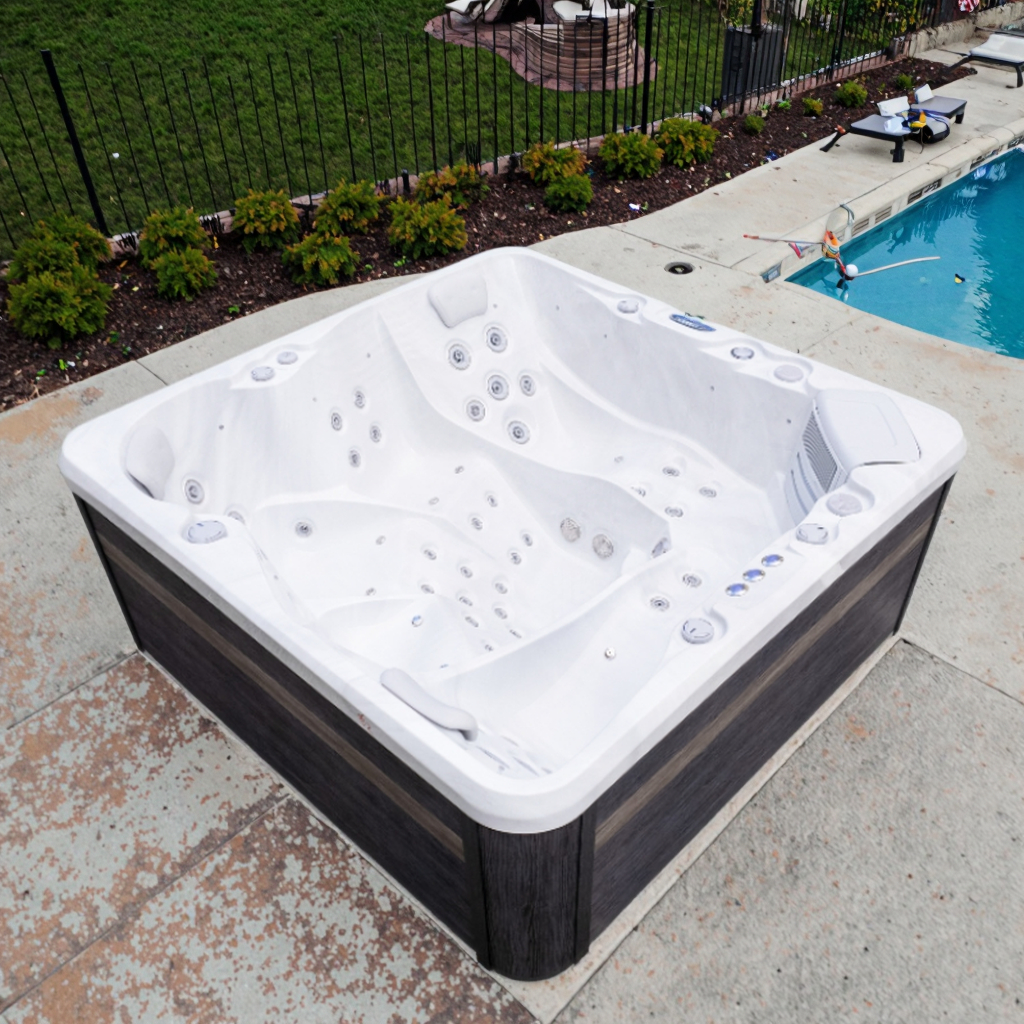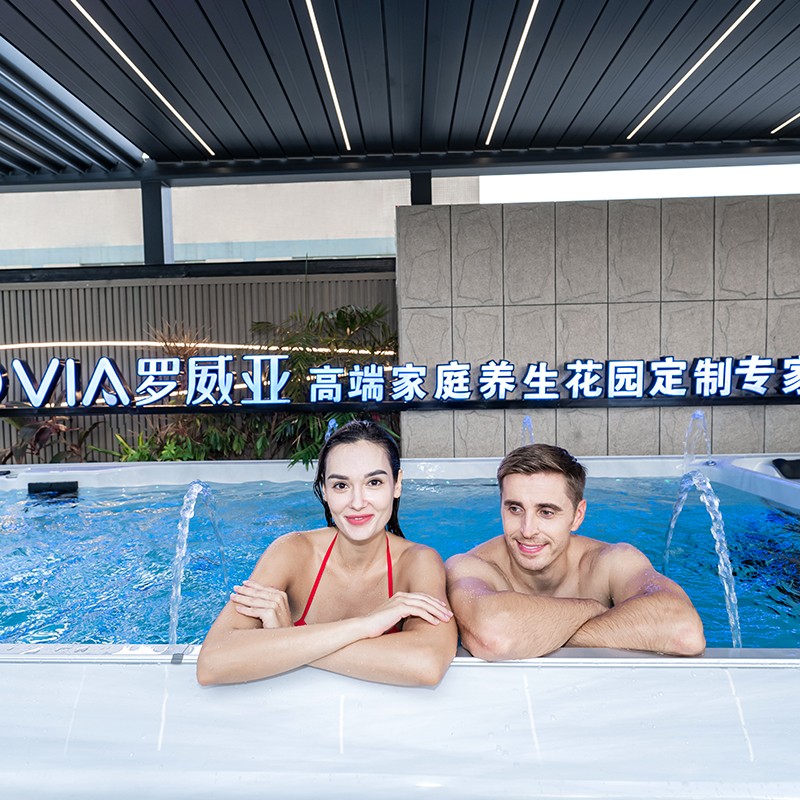
Hot Tubs and Swim Spas: Are Maintenance Methods the Same?
2025-11-07 15:30Hot tubs and swim spas are both common spa equipment in modern homes and commercial leisure facilities. While each offers distinct user experiences—one focuses on relaxation and massage, the other on a combination of fitness and hydrotherapy—many users are concerned about a practical question during daily use: Do hot tubs and swim spas require the same maintenance?
This seemingly simple question actually involves specialized knowledge across multiple levels, including water management, equipment construction, cleaning frequency, chemical balance control, filter systems, and electrical maintenance.
This article will provide a detailed comparison of these two types, focusing on structural principles, operating mechanisms, water quality maintenance, power requirements, cleaning management, chemical usage, and seasonal maintenance, explaining the differences and commonalities that require attention during maintenance.

Hot Tubs and Swim Spas: Basic Differences
Before discussing maintenance methods, it's important to clearly understand the definitions and primary functions of each.
1. Hot Tubs
A hot tub is typically a small, closed-circuit spa, typically with a capacity of 200 to 600 gallons and suitable for two to seven people. Its core function is to provide constant-temperature hot water and massage jets, suitable for relaxation and muscle soothing. Users typically soak in a seated position.
2. Swim Spa
Swim spas combine the features of swimming pools and hot tubs. They are typically larger, with a water capacity between 1,000 and 2,500 gallons. They feature a built-in reverse flow system for swimming training and a hot water massage seat at one end, providing hydrotherapy functions.
Key differences include:
· Size: Swim spas are significantly larger than hot tubs;
· Versatile: Swim spas combine fitness and relaxation functions;
· System Structure: Swim spas have more complex flow control systems;
· Frequency of Use: Swim spas may operate for extended periods, while hot tubs are more intermittent.
These differences determine their maintenance requirements.

How do structural differences affect maintenance?
1. Equipment System Complexity
· Hot tubs have a relatively simple structure, primarily consisting of a water pump, heater, filter, and massage jets.
· Swim spas incorporate these components, as well as a powerful propulsion system, backflow control, multiple circulation pumps, and a zoned hydraulic system.
More complex structures mean:
· More maintenance points;
· Higher power consumption;
· More frequent filter inspection and replacement;
· Multiple systems operating in parallel require independent monitoring.
Conclusion: While the basic principles of maintenance are similar, swim spas require more frequent and meticulous maintenance.

Hot Tubs and Swim Spas: A Comparative Analysis of Water Quality Management
1. Impact of Differences in Water Volume
· Hot tubs: Due to their small water volume (approximately 1,000-2,500 liters), they are more susceptible to contamination.
· Swim spas: Due to their large water volume (up to 10,000 liters), contamination is more diluted but cleaning is more difficult.
2. Chemical Balance Control
Both must control the following parameters:
· pH (7.2–7.8)
· Alkalinity (80–120 ppm)
· Disinfectant (such as chlorine or bromine)
· Calcium hardness (150–250 ppm)
However, due to the size of the water body, the dosage and adjustment frequency vary:
Maintenance items | Hot tubs | Swimming spas |
| pH adjustment frequency | Inspect every 2-3 days | Inspect at least 1-2 times a week |
| Chlorine/bromine addition | Refill after each use | Add water every 1-2 days or automatically |
| Water replacement | Completely replace every 2-4 months | Replace and refill parts every 6-12 months |
3. Disinfection System
Hot tubs often have ozone or UV lamps as auxiliary disinfection, while swim spas tend to use automated disinfection systems, such as salt chlorine generators or integrated control modules.
Hot Tubs and Swim Spas: Differences in Filtration and Circulation Systems
1. Circulation Pump System
·Hot tubs typically have one or two circulation pumps;
·Swim spas have at least two or three circulation pumps, plus a swim propulsion pump, resulting in longer operation times and higher maintenance requirements.
2. Filters
Both require regular filter cleaning, but the usage time and pollution load differ:
Item | Hot tubs | Swim spas |
| Cleaning Frequency | Every 2 weeks | Weekly |
| Replacement Cycle | Every 12 months | Every 6–9 months |
| Type Difference | Mostly use foam or paper filters | Often multi-layer composite high-flow filters |
Hot tub filters focus more on particulate removal, while swim spa filters, due to the large water volume and high power, require high flow rates and pressure resistance. Hot Tubs and

Swim Spas: Cleaning and Draining Maintenance Procedures
1. Hot Tubs
· It is recommended to drain the tub every 2-4 months.
· Use a special cleaning agent to scrub the tub's interior.
· Descale the jets.
· It is recommended to run a high-concentration descaling cycle before draining.
2. Swim Spas
· Complete draining is not recommended due to the tub's large size, which would be time-consuming and labor-intensive.
· Zoned cleaning and partial draining are generally used.
· Use a special circulating pipe cleaning fluid.
· Cleaning intervals should ideally be kept within 6 months.
Therefore, cleaning a swim spa relies more on an efficient filtration system and an automated dosing system.
Hot Tubs and Swim Spas: Power and Energy Maintenance
1. Hot Tubs
· Primarily the heating system, with power consumption of approximately 1.5kW–3kW.
· Operational hours are determined by user needs.
· The electronic control system requires minimal maintenance; regular checks for waterproofing are sufficient.
2. Swim Spas
· In addition to the heater, they also include multiple high-pressure water pumps.
· Maintaining a constant temperature for extended periods of time results in higher energy consumption.
· Control systems are often modular touchscreens, requiring regular upgrades and inspections of the protective housing seals.
Therefore, swim spas require more frequent system maintenance and energy consumption assessments.
Hot Tubs and Swim Spas: The Impact of User Behavior on Maintenance
Regardless of the device, user behavior directly impacts the frequency and difficulty of maintenance.
Behavior type | Impact Dimensions |
| Showering before bathing | Pollution Sources (Oil, Cosmetics) |
| Frequency of use | Pollution Accumulation, Water Fatigue |
| Number of people bathing simultaneously | Water Quality Fluctuations and Bacterial Growth |
| Whether covered during bathing | Water Evaporation, Ingress of Fallen Leaves |
Therefore, maintenance requires a two-pronged approach, focusing on both user habits and system maintenance.
Hot Tubs and Swim Spas: Are Maintenance Methods the Same?
In summary, from a technical perspective and process design, hot tub and swim spa maintenance follow similar principles, encompassing the following core components:
· Water quality testing and chemical balance maintenance
· Circulation and filtration system cleaning and replacement
· Interior wall and nozzle cleaning
· Drainage and refill management
· Electrical control system safety inspections
However, in practice, there are significant differences between the two:
Dimensions | Hot tub | Swim spas |
| Maintenance frequency | Medium | Higher price |
| Operational complexity | Relatively simple | More complex, requiring professional intervention |
| Labor cost | Self-maintenance | Recommended professional service or regular inspections |
| Material consumption | Minor chemicals | Large quantities of chemicals and filters |
Thus, the conclusion is: While the maintenance methods for hot tubs and swim spas are fundamentally the same, there are significant differences in execution. Swim spa maintenance is more intensive, specialized, and complex.
· If you own a hot tub, the maintenance workload is relatively minimal and can be completed independently.
· If you own a swim spa, more specialized knowledge and a systematic maintenance plan are required. It is recommended that you establish a periodic inspection schedule or hire a professional service provider.
Can I get discounts on LOVIA SPA products?
Yes. LOVIA SPA provides customized promotions, discounts, and low-price options for wholesale and bulk purchases. Buyers can request spa solutions, factory quotes, and large orders to enjoy cost-effective pricing. All products, including outdoor spas, swim spas, and massage tubs, are CE, ETL, SAA, ROHS, REACH, and ISO9001 certified.
Working directly with LOVIA SPA allows buyers to access high-quality spa products at competitive prices, with professional support for purchasing, shipping, and after-sales service.
